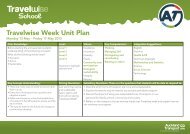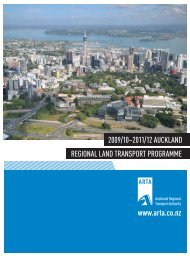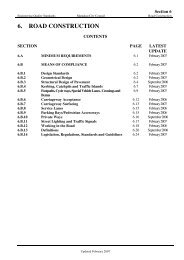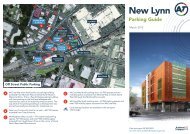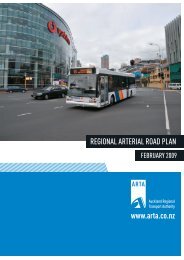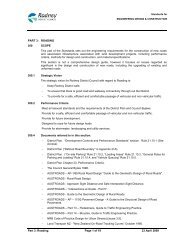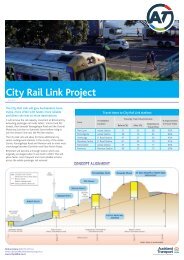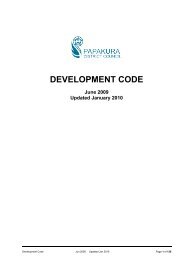ARTA Annual Report 2009 - Auckland Transport
ARTA Annual Report 2009 - Auckland Transport
ARTA Annual Report 2009 - Auckland Transport
You also want an ePaper? Increase the reach of your titles
YUMPU automatically turns print PDFs into web optimized ePapers that Google loves.
Public Equity<br />
Equity is the shareholder’s interest in the organisation and is measured as the difference between total<br />
assets and total liabilities. Equity is disaggregated and classified into accumulated funds and a capital<br />
grants reserve to enable clearer identification of the specified uses that the organisation makes of its<br />
accumulated surpluses.<br />
Financial Assets<br />
<strong>ARTA</strong> classifies its financial assets into the following categories:<br />
(i)<br />
Financial assets at fair value through profit or loss<br />
This category has two sub-categories: financial assets held for trading, and those designated at fair value<br />
through profit or loss on initial recognition. A financial asset is classified in this category if acquired<br />
principally for the purpose of selling in the short term or if so designated by management. The policy<br />
of management is to designate a financial asset if there exists the possibility it will be sold in the short<br />
term and the asset is subject to frequent changes in fair value. Derivatives are also categorised as held for<br />
trading unless they are designated as hedges. Assets in this category are classified as current assets if they<br />
are either held for trading or are expected to be realised within 12 months of the balance sheet date.<br />
(ii)<br />
Loans and receivables<br />
Loans and receivables are non-derivative financial assets with fixed or determinable payments that are<br />
not quoted in an active market. They arise when <strong>ARTA</strong> provides money, goods or services directly to a<br />
debtor with no intention of selling the receivable. They are included in current assets, except for those with<br />
maturities greater than 12 months after the balance sheet date which are classified as non-current assets.<br />
(iii)<br />
Financial assets at fair value through equity<br />
Financial assets at fair value through equity, comprising principally marketable equity securities, are nonderivatives<br />
that are either designated in this category or not classified in any of the other categories.<br />
They are included in non-current assets unless management intends to dispose of the investment within<br />
12 months of the balance sheet date.<br />
Financial assets at fair value through equity and financial assets at fair value through profit and loss are<br />
subsequently carried at fair value. Loans and receivables are carried at amortised cost using the effective<br />
interest method. Realised and unrealised gains and losses arising from changes in the fair value of the<br />
financial assets at fair value through profit or loss category are included in the income statement in the<br />
period in which they arise. Unrealised gains and losses arising from changes in the fair value of financial<br />
assets at fair value through equity are recognised in equity in the financial assets at fair value through<br />
equity revaluation reserve. When securities classified as financial assets at fair value through equity are sold<br />
or impaired, the accumulated fair value adjustments are included in the income statement.<br />
84



